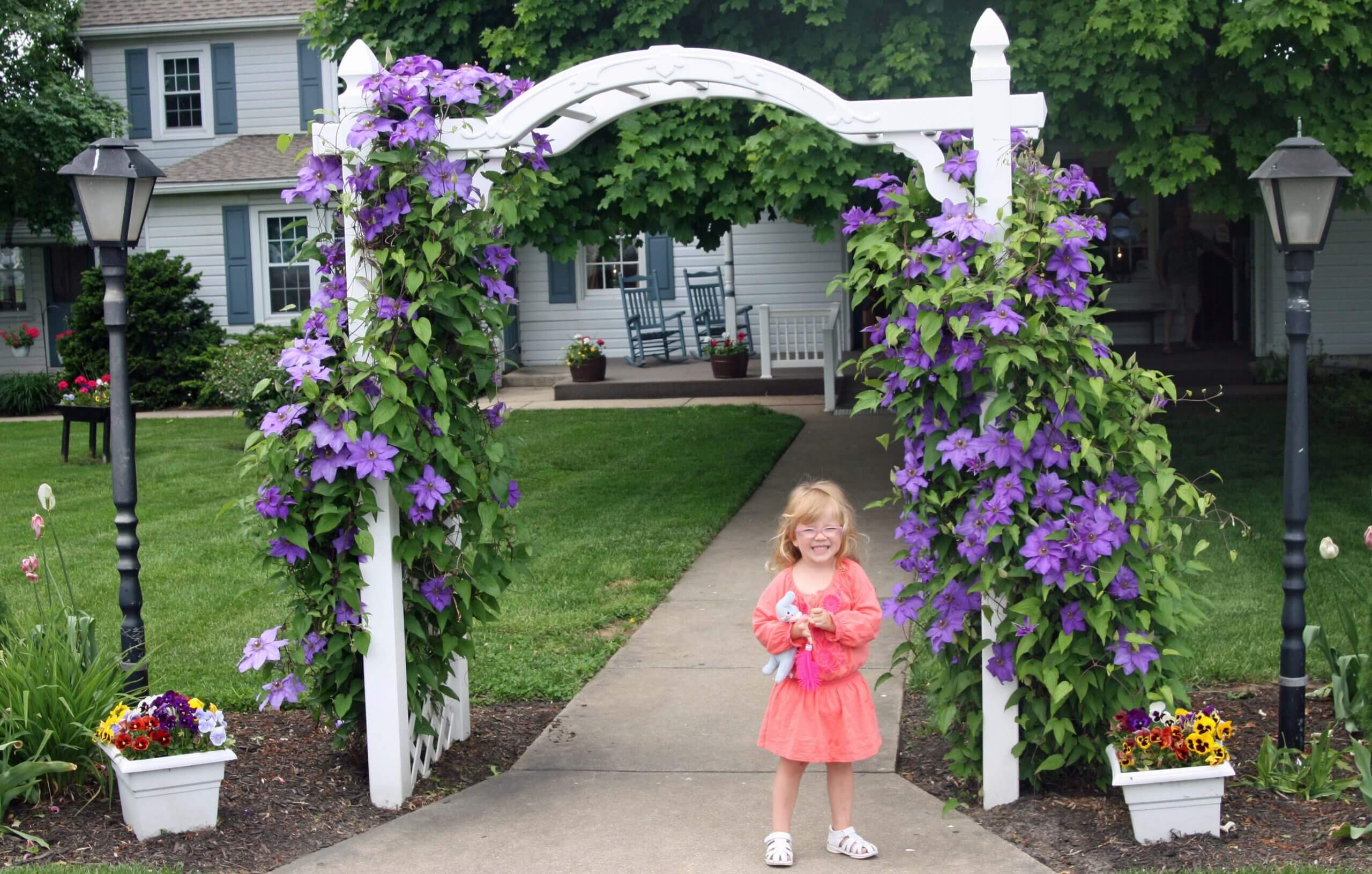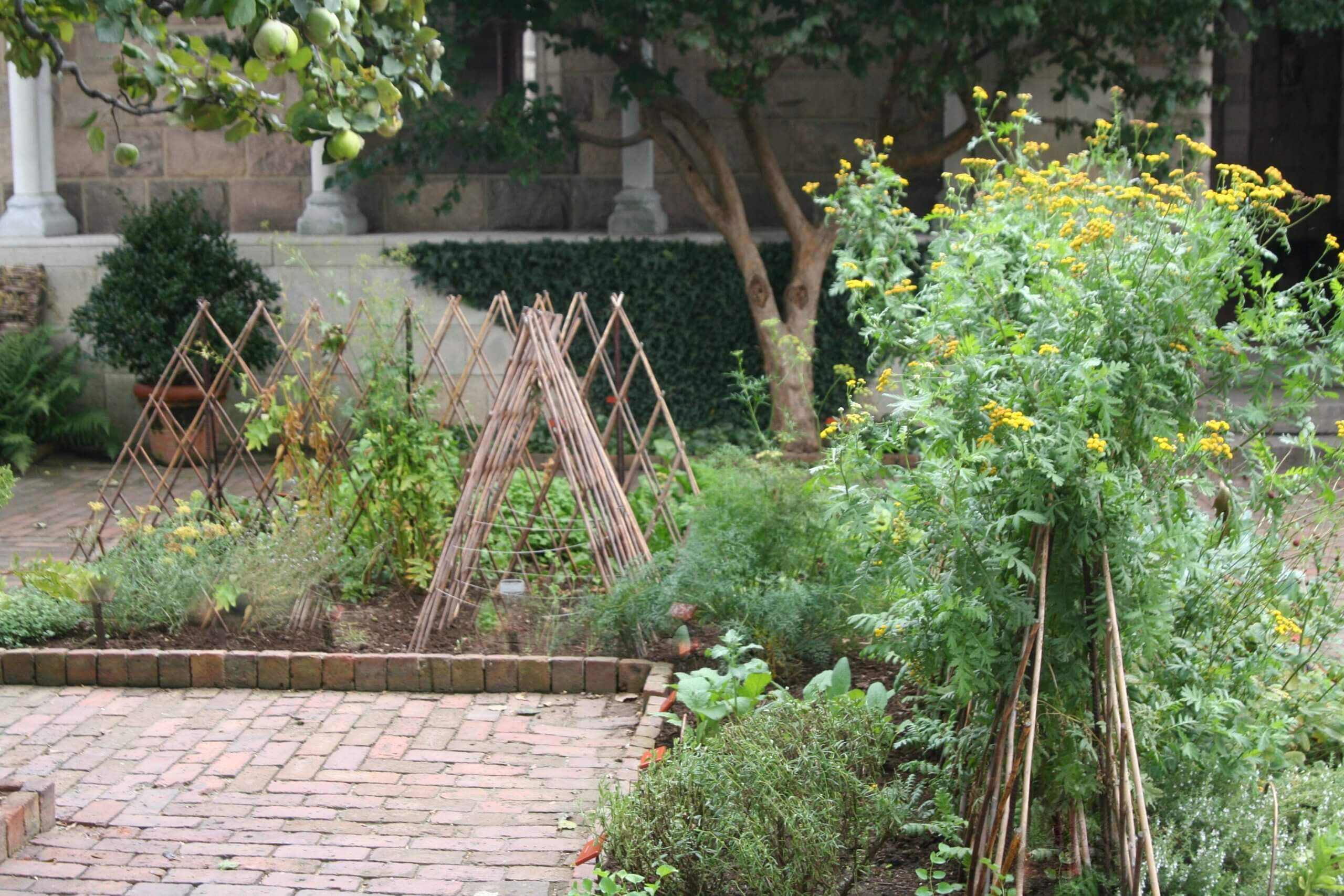
More often than not, gardeners need garden trellising to help solve space issues or to simply add a vertical element to the garden. For sturdy perennial vines or lianas (woody vines), more sturdy permanent trellises are required. In the vegetable garden, functional and seasonal trellises for pole beans, peas, vining cucumbers and gourds are all that are needed. Simple, appealing trellis designs that let the plants take center stage are generally most desirable. Creating trellises with free or inexpensive materials makes home trellising solutions even more doable.
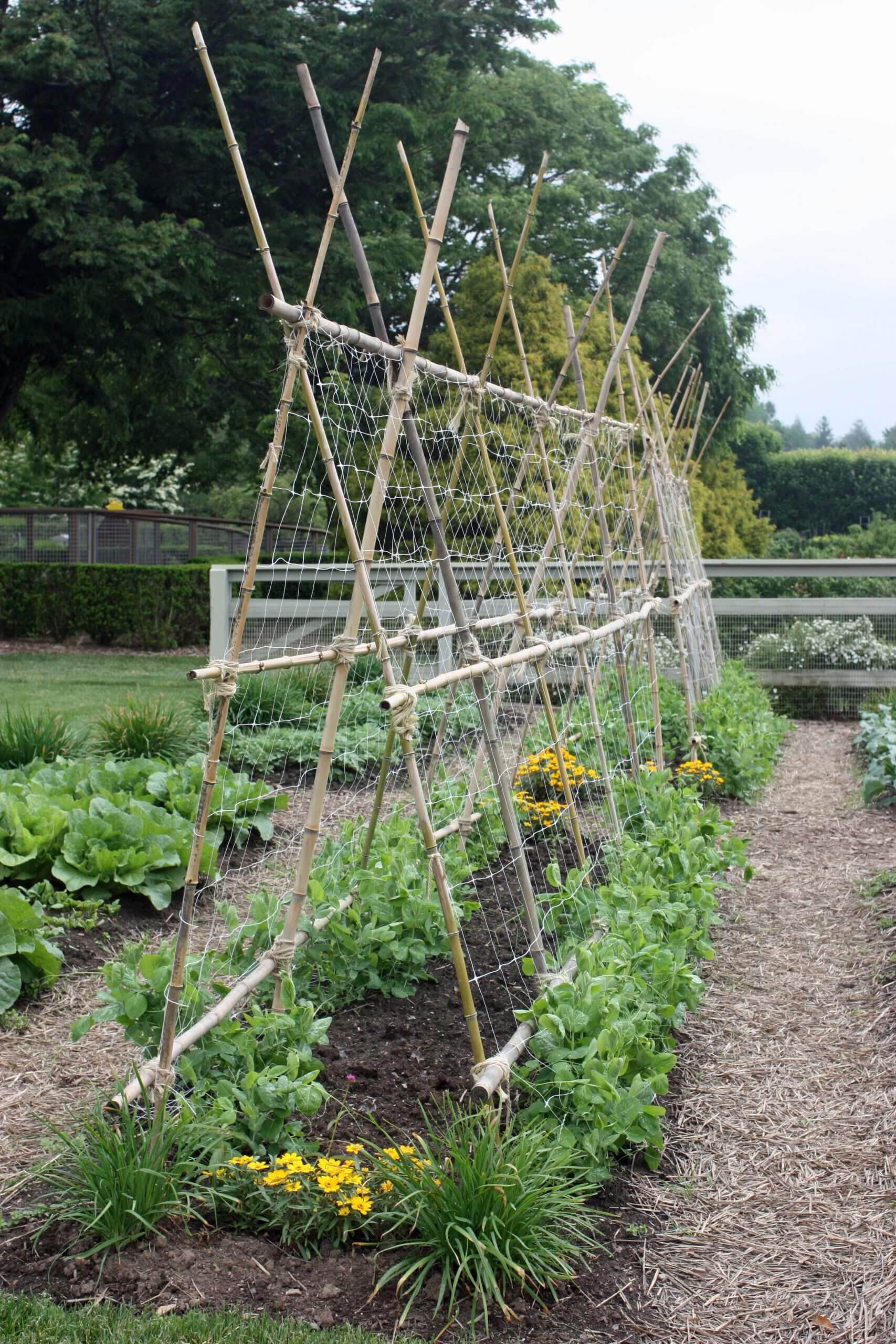
Bamboo Trellises
We have two sources of free bamboo that we use liberally each season to make tidy trellises and tipis for vines. If you know of a roadside or neighborhood stand of bamboo, contact your local Department of Transportation or the land owner and ask if you can cut some stems. Bamboo is an ecological menace, so most sources will let you take as much as you like.
Once you have your bamboo, all you need are some strong pruners or loppers and either heavy duty twine or plastic cable ties to pull the whole trellis together. For tipis, choose bamboo poles at least 7 to 8-feet in length; sink these at least 8 inches into the ground (at an inward angle) in a well-proportioned circle (at least six poles) or a square (four poles). Complete the tipi by bringing the top pieces together and tying them at the top liberally with heavy twine. String or twine can be tied in a circle around the trellis to help vines weave their way upwards.
The best bamboo trellises for row crops look like a tipi allée—some may rely on heavy cross-hatching with bamboo, while others may have twine cross-hatching to better support tendrils and twining stems. All have a top bar of bamboo for stability. As with the tipis, it is important to sink them deeply in the soil. When securing the bamboo top bar, either twine or plastic cable ties can be used. Cable ties make a stronger tipi. Just be sure to collect and recycle them when the trellis needs to be taken down.

Willow & Wattle
Wattle was the preferred means of fencing and trellising in the middle ages. The process simply involves weaving green, pliable willow into low fences or standing trellises. Creating your own wattle requires a good bit of willow and work, but the end result is nice. The simplest design involves setting seven stout sticks of even strength and length
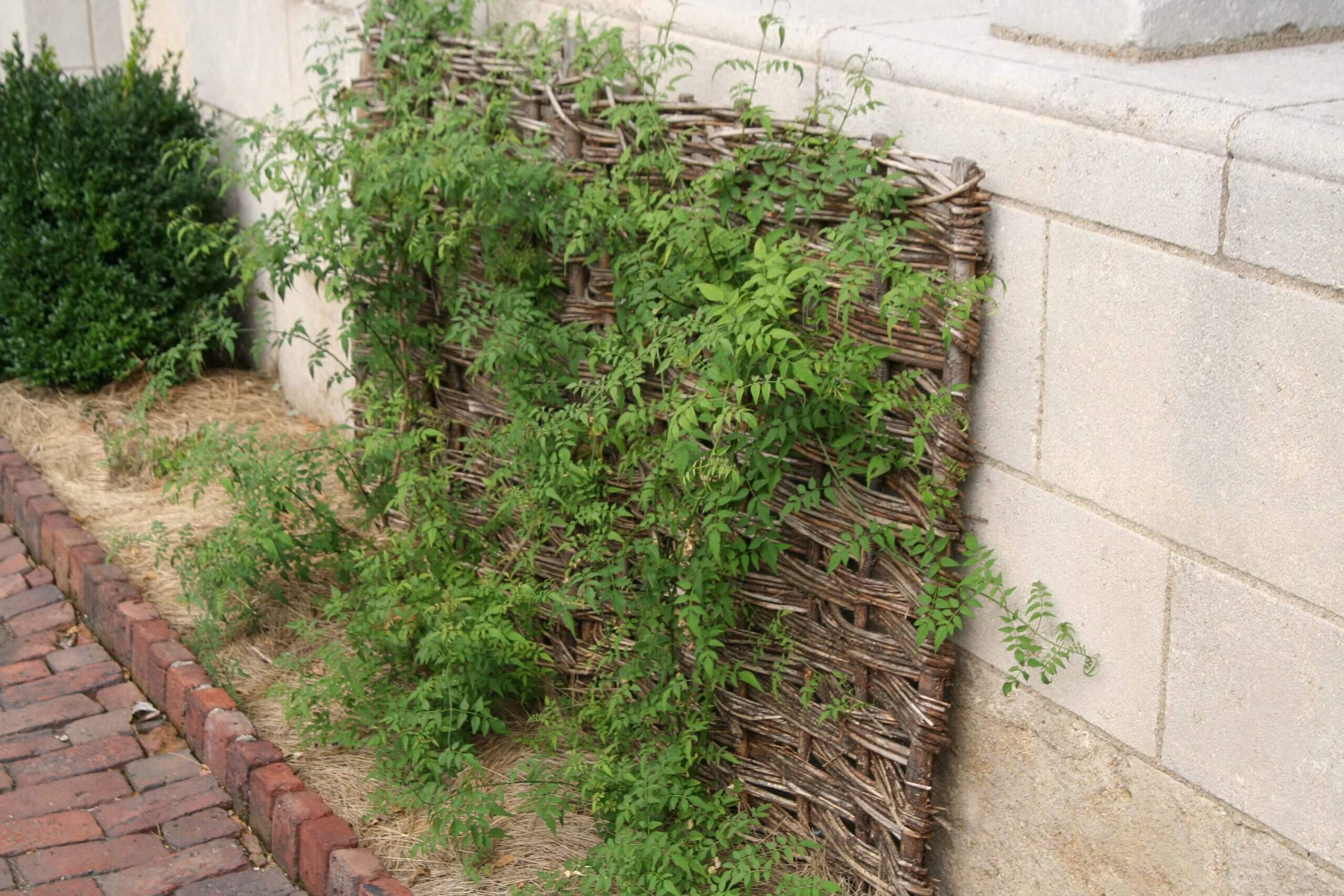
(4 to 5 feet) and sinking them in the ground to the depth of 6 inches and a distance of around 6-inches apart. At least 30 long (~6-foot), pliable whips of willow are needed to weave through the trellis. Starting at the base, weave the willow branches through the sticks, up and over as you would weave a basket. Continue weaving until you reach the top. Any willow stick ends that are sticking out can be pruned off at the end.
Willow stems arched over the ground also make the perfect support for low-growing peas and other short vines or airy flowering plants needing a little extra support.
Wood Trellises & Fencing
My favorite trellises can be found in historic gardens. Simple wooden trellises or fencing designed to support vining plants always look the cleanest and most appealing. A trip to Colonial Williamsburg, Monticello, or Mount Vernon offer visitors loads of classic trellising options favored in early America. Even better, the styles are often simple enough to make. Common styles include everything from colonial bentwood trellises to colonial split-rail fencing and early picket designs.
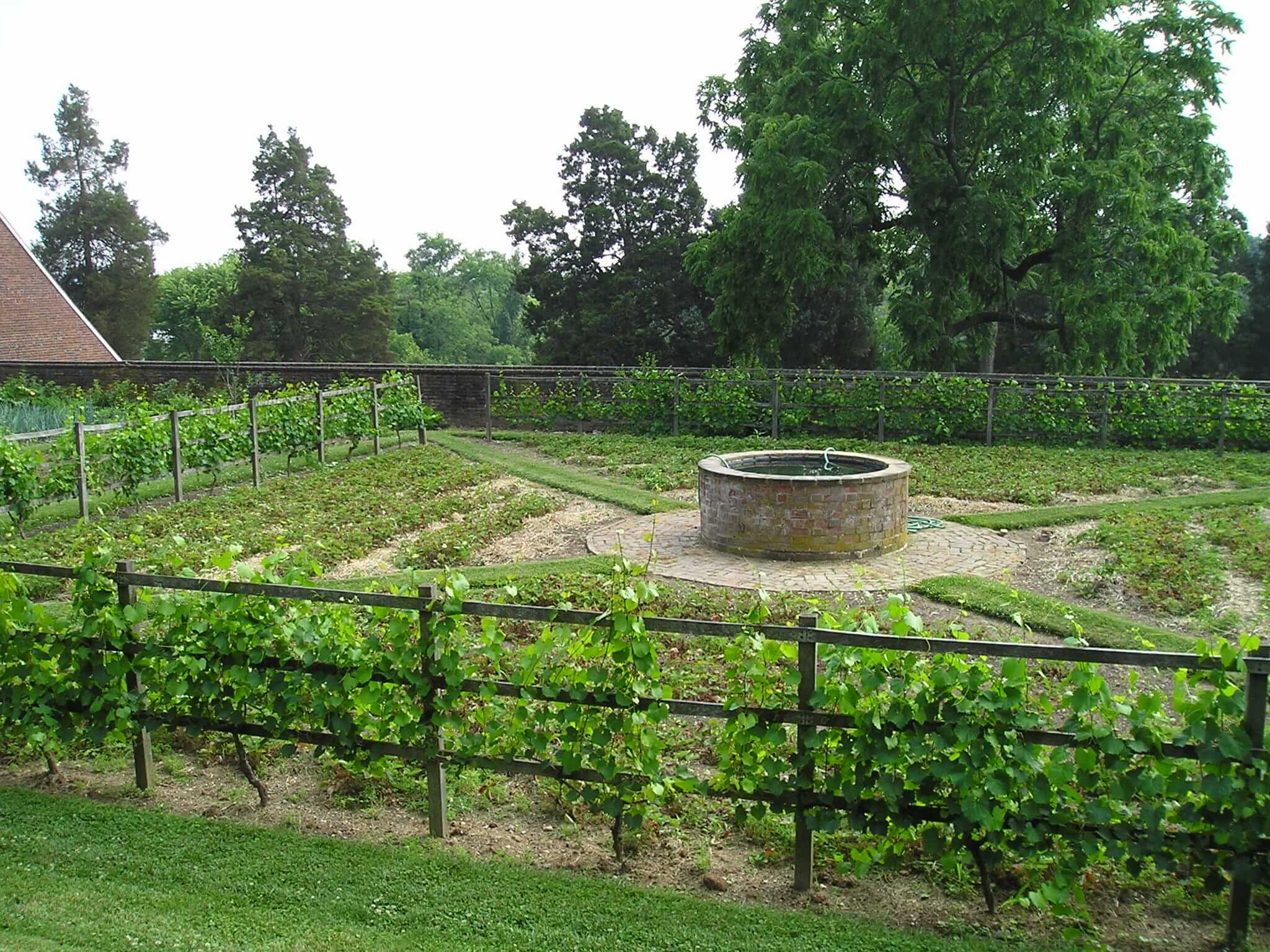
Arbors & Pergolas
Simple, sturdy arbors can be bought or made. My favorites include the large, rustic, woven arbors that can be found at the trial gardens at Chanticleer Gardens in Wayne, PA. The simply elegant curves add substance and depth to the space making the gardens extra inviting to visitors. All manner of colorful flowering vines are grown up them.
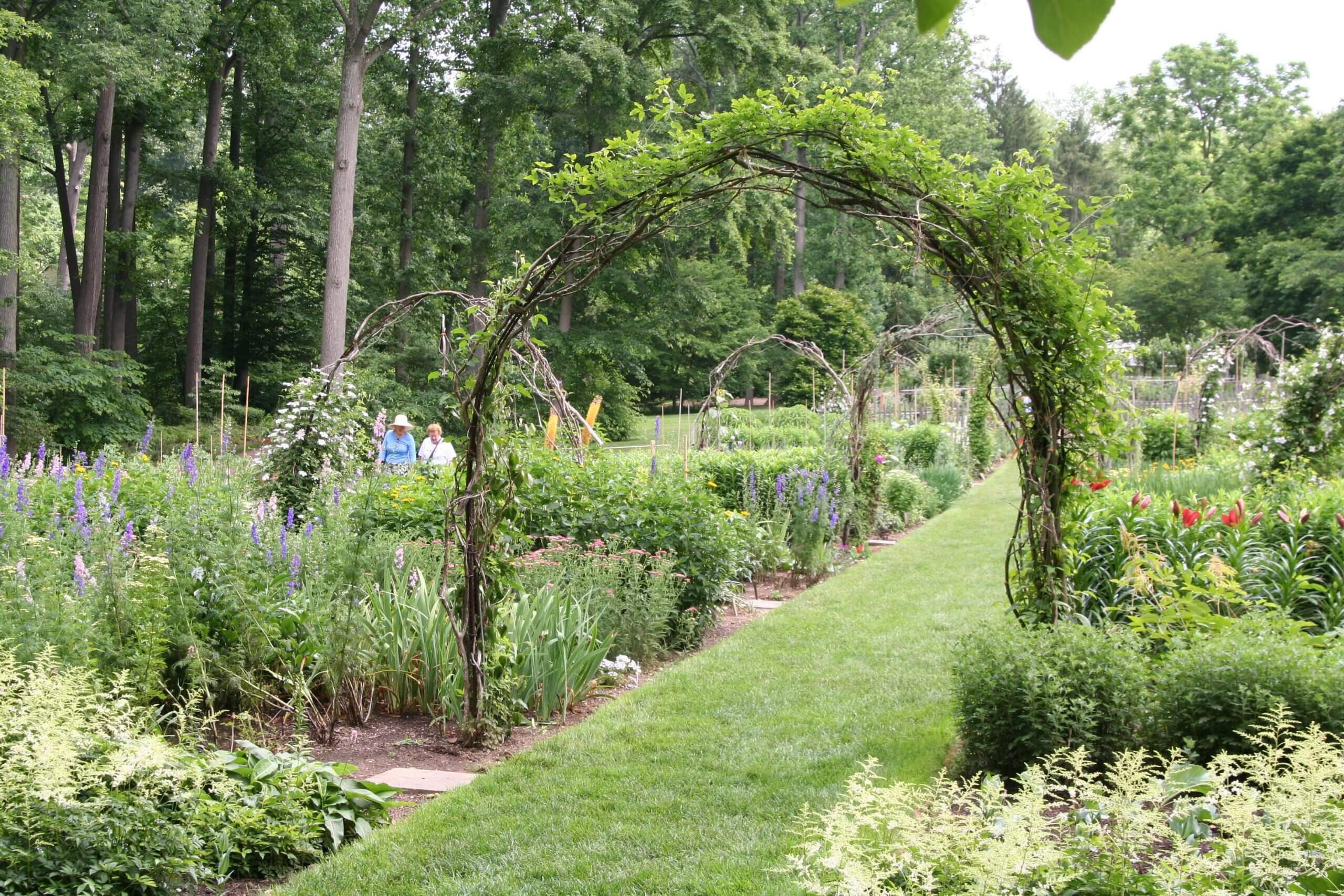
Pretty purchased arbors also add invitation to entryways and outdoor spaces. Bright white or natural wood options are most common. In my garden and my family’s gardens, we have found that wide arbors are most functional. It’s always nice to have an arbor big enough to accommodate a rider mower, or bevvy of workmen, if need be. Likewise, strong trellises made of long-lasting materials should be chosen for large, woody perennial vines, like wisteria, trumpet creeper or red honeysuckle.
Pergolas are elongated garden arbors that can be used for training everything from gourds to grapes. It’s common for them to house a sitting bench for private contemplation. Often they are attached to wooden decks and provide cool, green shade from the hot summer sun if covered with a dense layer of vine.
Amend Before Trellising
Before setting trellis, I always amend the soil beneath. This is most essential with vegetable gardens where soil needs to be “fed” and replenished each season. Two of my general go-to products for this purpose are Black Gold Garden Compost Blend and Earthworm Castings. Generously work both into the soil before planting, and add a little fertilizer and then you’ll be ready to trellis.
Learn more about outstanding flowering vines for the summer by clicking here.
